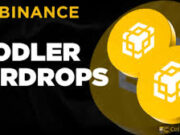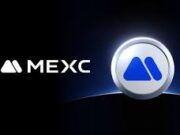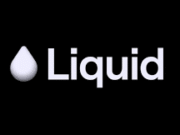When you think of crypto exchange-traded funds (ETFs), often the first tokens that come to mind are Bitcoin and Ethereum. But on Tuesday, the U.S. market opened its doors to a new frontier: ETFs tied to other cryptocurrencies — including one of the most talked-about smart contract platforms, Solana (SOL). Surprisingly, the timing comes despite the U.S. Securities and Exchange Commission (SEC) being handicapped by a government shutdown.
Here’s a human-to-human look at what happened, what it signals and how it might affect you if you’re following or investing in crypto.
A New Wave of Crypto ETFs Rolls Out
On Oct. 28, 2025, several ETFs focused on so-called “alt-coins” officially began trading in the U.S. The headline item: the BSOL (trading ticker) — the Bitwise Asset Management Solana Staking ETF — which offers 100% direct exposure to Solana plus supports staking rewards. (CoinLaw)
At the same time, issuers such as Canary Capital launched ETFs tied to Litecoin (LTC) and Hedera (HBAR) — putting a stake in the ground for alt-coins beyond the big two. (Yahoo Finance)
What makes this especially notable: the regulatory backdrop. The SEC is operating under significantly reduced capacity due to the government shutdown, yet the filings were structured so that some become effective automatically after 20 days. That mechanism allowed these ETF listings to push ahead. (Bloomberg Law)
What the Solana ETF Actually Offers
Let’s zoom in on BSOL and what sets it apart.
- The fund offers full direct exposure to Solana, meaning it holds the actual coins (or equivalent structure) rather than derivatives. (CoinLaw)
- It is built to include staking — meaning capital invested isn’t just sitting there, but actively participating in Solana’s network and earning rewards. According to Dune Analytics data, the yield could be about 7 %. (Bloomberg Law)
- The listing goes live despite regulatory uncertainty, showing that the infrastructure for such products is now mature. (CryptoSlate)
In short, this is not simply “crypto fund number three”; it’s a meaningful step toward bringing non-Bitcoin, non-Ethereum crypto into mainstream investment vehicles.
The Regulatory Twist
You might be asking: “Hold on — if the SEC is largely shut down, how did this happen?” Good question.
- The key lies in a regulatory shortcut. Issuers amended their S-1 filings to include language allowing them to become automatically effective 20 days after filing, even without direct SEC approval. (TradingView)
- Because the SEC is operating at minimal capacity, these automatic processes were effectively leveraged to launch the ETFs. (Bloomberg)
- This procedural workaround doesn’t mean the SEC is out of the picture — it still retains oversight — but it reveals how asset managers are adapting to regulatory realities.
The regulatory environment is evolving, and this launch demonstrates that crypto products are moving from “yes, maybe someday” into “yes, right now”.
Broader Implications for the Crypto Market
What do these launches tell us — and what might it mean going forward?
Institutional-ready infrastructure: The fact that staking-enabled products are going live indicates the custodial, regulatory, tax and operational infrastructure has matured sufficiently for institutional markets. (CryptoSlate)
Diversification beyond Bitcoin and Ethereum: With Solana, Litecoin, Hedera now getting ETF treatment, investors can more easily access exposure to the “alt-coin layer” through regulated channels. That may shift capital flows — both in and out of these coins.
Competitive pressure on fees and features: As more issuers bring alt-coin ETFs, features like staking rewards, lower fees, or token-specific structures will become competitive differentiators. BSOL’s staking focus is a leading example.
Potential for increased liquidity and visibility: ETFs bring exposure to a broader investor base (including those who might not want to handle crypto wallets or exchanges). That could increase demand for underlying assets, or at least change how they’re viewed in the market.
Higher regulatory profile: Making these assets available in regulated form may invite further scrutiny around compliance, token classification, governance and risks. With visible funds come visible responsibilities.
What This Means for Everyday Investors
If you’re someone following crypto — whether casually or seriously — here are some thoughts tailored for you.
- Access without custody headaches
For many, handling wallets, keys, staking, and exchanges is a headache or a barrier. An ETF like BSOL gives simplified access: buy into your brokerage account, and the issuer handles the rest (staking, custody, etc.). - Understand the staking reward component
The 7 % yield is compelling — but remember: staking rewards are not guaranteed, and underlying token price moves will dominate the outcome. Make sure you’re comfortable with the token’s fundamentals (Solana’s ecosystem, development, competition) in addition to the yield. - Consider the alt-coin risk profile
While Bitcoin and Ethereum have broad infrastructure and recognition, alt-coins like Solana, Litecoin, Hedera carry additional risks — technical, competitive, regulatory — but also additional potential upside. - Watch the fee and structure dynamics
If many similar ETFs launch, fee compression may occur. Also look carefully: does the fund truly own the token and stake it? Are there restrictions on redemption, lock-ups or staked vs. unstaked assets? - Keep regulatory risk in mind
Even though these ETFs are launching now, regulatory clarity remains evolving. Future policy changes could impact how these funds are taxed, structured or even supported. The fact that they launched during a shutdown is interesting — but doesn’t make them immune from future scrutiny.
Many Questions And Some Answers
Who are the issuers?
- Bitwise Asset Management is the issuer of the Solana Staking ETF. (CoinLaw)
- Canary Capital is issuing the Litecoin and Hedera spot ETFs. (CoinGape)
What tokens are involved?
- Solana (SOL) via BSOL.
- Litecoin (LTC) and Hedera (HBAR) via Canary’s funds.
- These aren’t just spot exposures — at least in the case of Solana, staking rewards are built in.
What yields are involved?
- Reports indicate possible staking yields of about 7 % for Solana via BSOL. (Bloomberg Law)
- As always: yields can change with network conditions, token inflation, validator performance, and market demand.
Why did this happen now?
- Issuers structured their filings to be automatically effective after 20 days, enabling launch even while the SEC is operating at reduced capacity. (TradingView)
- The underlying infrastructure (custody, staking services, token network maturity) is finally catching up.
- Investors’ appetite for diversified crypto exposure is growing — and the industry is responding.
Final Thoughts
This launch of alt-coin focused ETFs feels like a watershed moment in crypto investing. For years, the narrative was: “Bitcoin, maybe Ethereum, but beyond that it’s jungle.” Now, we’re seeing regulated products that open the gates for Solana, Litecoin, Hedera.
Whether you’re bullish or cautious, here are a few take-aways to keep front of mind:
- The ability to access these coins via a brokerage account without managing wallets is a big deal.
- But access isn’t a substitute for doing your homework — the risks remain real.
- The staking feature brings an extra layer of complexity: reward estimation, network risk, tokenomics matter.
- Regulation may be playing catch-up, but it’s accelerating. The fact that these ETFs launched during a shutdown suggests momentum is strong.
- Finally, it’s a sign that crypto is moving deeper into mainstream finance — which means more potential capital flows, but also more oversight, more competition, and more complexity.
For anyone in Nigeria (or anywhere), this means that global investment channels are evolving. Just remember: even though a fund may be available, local regulatory and tax rules may vary, so always check how a product fits into your jurisdiction and personal investment goals.
Sources:
- “NYSE, Nasdaq List Solana, Hedera, Litecoin Spot Crypto ETFs for Trading This Week” – CoinDesk (CoinDesk)
- “US Solana Staking ETFs Begin Trading Today: What it Changes for Altcoins” – CryptoSlate (CryptoSlate)
- “Bitwise Launches First Spot Solana Staking ETF on NYSE” – CoinLaw (CoinLaw)
- “New Crypto ETFs Launch in Crowded Field Despite SEC Shutdown” – Bloomberg Law (Bloomberg Law)
- “Bitwise Solana Staking ETF (BSOL), Canary Litecoin and HBAR ETFs to Launch Today” – CoinGape (CoinGape)



























